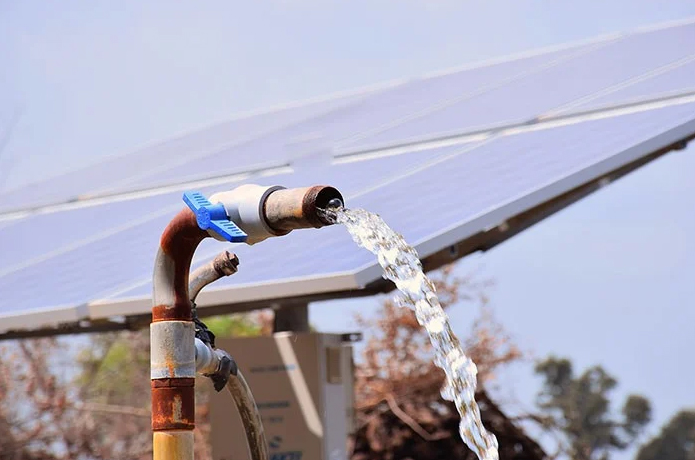Solar water pumps have a lot of uses nowadays. It presents a clean, simple and energy-efficient alternative to traditional electric and fuel-driven pump sets. They are part of an environmentally friendly approach in agriculture and can be used to exploit every region, whether its developed or poor. They are common in pumping water from wells, aquarium filtering, pond filtering and aeration. When it comes to water pumps, the main use of this device is the exchange of fluids such as water.
From agriculture to the energy industry, pumps are found in a wide range of applications. The main working principle of a water pump system basically depends upon the positive displacement principle and kinetic energy which helps pushing the water.

Supply Water for your Home
Solar pumps are used for private homes, cabins, villages, medical clinics, etc. A water pump can be powered by its own PV array, or by a main system that powers lights and appliances. An elevated storage tank may be used, or a second pump called a booster pump can provide necessary water pressure. Or the main battery system can provide storage instead of a tank. Collecting rain water can supplement solar pumping when sunshine is scarce. To design a solar powered water pump system, it helps to view the whole picture and consider all the resources.
Water for Livestock
Cattle ranchers in the Americas, Australia and Southern Africa are enthusiastic users of solar pumps. Their water sources are scattered over vast range land where power lines are few and costs of transport and maintenance are high. Some ranchers use solar pumps to distribute water through several miles (over 5 km) of pipelines. Others use portable systems, and move them from one water source to another.
Water for Plants
Solar water pumps are used on small farms, orchards, vineyards and gardens. It is most economical to power the pump directly from the PV array (without battery), store water in a tank, and then distribute it by gravity flow. Where pressurizing is required, storage batteries stabilize the voltage for consistent flow and distribution, and may eliminate the need for a storage tank. Batteries also introduce cost, complexity and additional maintenance into the system.
Think Small with Solar Water Pumping
There are no limits to how large solar pumps can be built, but they tend to be most competitive in small installations where combustion engines are least economical. The smallest solar pumps run on less than 150 Watts of PV, and can lift water from depths exceeding 200 feet (65 m) at 1.5 gallons (5.7 liters) per minute. You may be surprised by the performance of such a small system. In a 10-hour sunny day it can lift 900 gallons (3400 liters). That’s enough to supply several families, or 30 head of cattle, or 40 fruit trees!
Slow solar pumping system lets us utilize low-yield water sources. It also reduces the cost of long pipelines, since small-sized pipe may be used. The length of piping has little bearing on the energy required to pump, so water can be pushed over great distances as low cost. Small solar pumps may be installed without heavy equipment or special skills.
The most effective way to minimize the cost of solar pumping is to minimize water demand through conservation. Drip irrigation, for example, may reduce consumption to less than half that of traditional methods. In homes, low water toilets can reduce total domestic use by half. Water efficiency is a primary consideration in solar pumping economics.